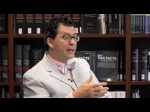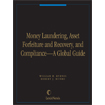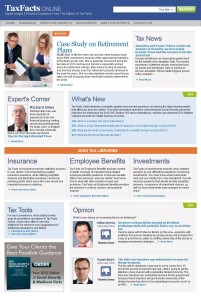Thursday, August 28, 2014
Monday, August 25, 2014
Goldman Sachs' $3.15 billion Settlement with FHFA
International Financial Law Prof Blog Under the terms of the settlement, Goldman Sachs will pay $3.15 billion in connection with releases and the purchase of securities that were the subject of statutory claims in the lawsuit FHFA v. Goldman Sachs & Co., et al., in the U.S. District Court of the Southern District of New York
Monday, August 11, 2014
Why DId BNP Paribas Pays $8.9 Billion for Sanction Violations With Iran, Sudan & Cuba?
$8.9 Billion Settlement of $19 Billion Possible Penalty
On June 30th, the U.S. Department of the Treasury’s Office of Foreign Assets Control (OFAC), as part of a combined $8.9 billion settlement (settlement agreement here) with federal and state government agencies, today announced a $963 million agreement with BNP Paribas (BNPP) to settle its potential liability for apparent violations of U.S. sanctions regulations. The $8.9 billion is the largest OFAC settlement to date. However, the statutory maximum and base civil monetary penalties in this case were $19,272,380,006.
What Did BNP Paribas Do Exactly?
For a number of years, up to and including 2012, BNPP processed thousands of transactions to or through U.S. financial institutions that involved countries, entities, and/or individuals subject to the sanctions programs listed above. BNPP appears to have engaged in a systematic practice, spanning many years and involving multiple BNPP branches and business lines, that concealed, removed, omitted, or obscured references to, or the interest or involvement of, sanctioned parties in U.S. Dollar Society for Worldwide Interbank Financial Telecommunication payment messages sent to U.S. financial institutions.
The specific payment practices the bank utilized in order to process sanctions-related payments to or through the United States included omitting references to sanctioned parties; replacing the names of sanctioned parties with BNPP’s name or a code word; and structuring payments in a manner that did not identify the involvement of sanctioned parties in payments sent to U.S. financial institutions. While these payment practices occurred throughout multiple branches and subsidiaries of the bank, BNPP’s subsidiary in Geneva and branch in Paris facilitated or conducted the overwhelming majority of the apparent violations.
How Bad Was BNP Paribas Conduct?
OFAC determined that BNPP did not voluntarily self-disclose its violations (it was a whistleblower), and that the apparent violations constitute an egregious case: BNPP’s systemic practice of concealing, removing, omitting, or obscuring references to information about U.S.-sanctioned parties in 3,897 financial and trade transactions routed to or through banks in the United States between 2005 and 2012, including:
$8 Billion with Sudan
BNPP officials have described Darfur as a “humanitarian catastrophe” and, while discussing the Sudanese business, noted that certain Sudanese banks “play a pivotal part in the support of the Sudanese government which…has hosted Osama Bin Laden and refuses the United Nations intervention in Darfur.” BNPP’s senior compliance personnel agreed to continue the Sudanese business and rationalized the decision by stating that “the relationship with this body of counterparties is a historical one and the commercial stakes are significant. For these reasons, Compliance does not want to stand in the way.”
BNPP processed 2,663 wire transfers totaling approximately $8,370,372,624 between September , 2005, and July 24, 2009, involving Sudan. The total base penalty for this set of apparent violations was $16,826,707,625. $8 billion in four years – approximately $2 billion a year.
$1 Billion with Iran
BNPP processed 318 wire transfers totaling approximately $1,182,075,543 between July 15, 2005, and November 27, 2012, involving Iran. The total base penalty for this set of apparent violations was $2,382,634,677.
$700 Million With Cuba
BNPP processed 909 wire transfers totaling approximately $689,237,183 between July 18, 2005, and September 10, 2012. The total base penalty for this set of apparent violations was $59,085,000.
$1.5 Million with Burma
BNPP processed seven wire transfers totaling approximately $1,478,371 between November 3, 2005, and approximately May 2009, involving Burma. The total base penalty for this set of apparent violations was $3,952,704.
Who Was Involved?
Benjamin M. Lawsky, New York’s Superintendent of Financial Services, said, “BNPP employees – with the knowledge of multiple senior executives – engaged in a long-standing scheme that illegally funneled money to countries involved in terrorism and genocide. As a civil regulator, we are taking action today not only to penalize the bank, but also expose and sanction individual BNPP employees for wrongdoing. In order to deter future offenses, it is important to remember that banks do not commit misconduct – bankers do.”
- COO Signed Off on Continuing Illicit Transactions at Meeting Where He Asked Minutes Not to be Taken”;
- North American Head of Ethics/Compliance wrote: “The Dirty Little Secret Isn’t So Secret Anymore, Oui?”
Did Anyone Go to Prison?
No. No charges have been brought.
If Not Prison, Then What Was the Discipline?
Some executives were merely ‘separated’. What does separated mean? Asked to resign? Awarded severance? Kept the high salaries and bonuses derived from the illicit business – yes. What of the COO who “signed off on continuing illicit transactions at a meeting where he asked minutes not to be taken“? He was allowed to retire. He keeps his pension, retirement funds, bonuses …
What BNP states: “As a result of BNP Paribas’ internal review, a number of managers and employees from relevant business areas have been sanctioned, a number of whom have left the Group.”
But what the Department of Financial Services states: At DFS’s direction, 13 individuals were terminated by or separated from the Bank as a result of the investigation, including the following senior executives:
- George Chodron de Courcel, Group Chief Operating Officer
- Vivien Levy-Garboua, Current Senior Advisor to the BNPP Executive Committee and Former Group Head of Compliance
- Christopher Marks, Group Head of Debt Capital Markets
- Dominique Remy, Group Head of Structured Finance for the Corporate Investment Bank (CIB)
- Stephen Strombelline, Head of Ethics and Compliance for North America
In total, including those terminated, the Department of Financial Services reports that the Bank disciplined 45 employees, with levels of discipline ranging from dismissals, to cuts in compensation, demotion, and other sanctions, while 27 additional BNPP employees who would have been subject to potential disciplinary action during the investigation had already resigned.
Who Is Paying the Fine?
BNP Paribas shareholders inevitably. No fines have been levied against the employees involved. BNP shareholders include:
| Belgian State (through SFPI (1)) | 10.3% |
| Grand Duché de Luxembourg | 1.0% |
| Employees | 5.5% |
| Retail shareholders | 4.9% |
| European institutional Investors | 46.1% |
| Non-European institutional investors | 30.0% |
| Other and unidentified | 2.2% |
| Total | 100% |
How Will BNP Minimize the Risk of Its Doing It Again?
Under the settlement agreement, BNPP is required to put in place and maintain policies and procedures to minimize the risk of the recurrence of such conduct in the future. BNPP is also required to provide OFAC with copies of submissions to the Board of Governors relating to the OFAC compliance review that it will be conducting as part of its settlement with the Board of Governors.
BNP states that it has designed new robust compliance and control procedures:
- a new department called Group Financial Security US, part of the Group Compliance function, will be headquartered in New York and will ensure that BNP Paribas complies globally with US regulation related to international sanctions and embargoes.
- all USD flows for the entire BNP Paribas Group will be ultimately processed and controlled via the branch in New York.
Read my previous analysis warning to financial institutions about lack of education
LexisNexis’ Money Laundering, Asset Forfeiture and Recovery and Compliance: A Global Guide - This eBook with commentary and analysis by hundreds of AML experts from over 100 countries, is designed to provide the compliance officer accurate analyses of the AML/CTF Financial and Legal Intelligence, law and practice in the nations of the world with the most current references and resources. The eBook is organized around five main themes: 1. Money Laundering Risk and Compliance; 2. The Law of Anti-Money Laundering and Compliance; 3. Criminal and Civil Forfeiture; 4. Compliance and 5. International Cooperation. As these unlawful activities can occur in any given country, it is important to identify the international participants who are cooperating to develop methods to obstruct these criminal activities.
Friday, August 8, 2014
William Byrnes' Thoughts on Online Legal Education
The article comprises four sections. Part 1 addresses the economics reasons for, and logistics considerations of, the Internet-delivered Program. Part 2 reviews the pedagogical approach to legal education employed in the United States, criticisms thereof, and finally examines an emerging pedagogical trend in the United Kingdom. Part 3 reviews the teaching tools employed in the Program, and Part 4 reviews the practical aspects of developing the Program and obtaining American Bar Association (ABA) acquiescence, and reviews the Internet-delivered law courses that came before it. Finally, the article concludes with some personal observations.
approach to legal education employed in the United States, criticisms thereof, and finally examines an emerging pedagogical trend in the United Kingdom. Part 3 reviews the teaching tools employed in the Program, and Part 4 reviews the practical aspects of developing the Program and obtaining American Bar Association (ABA) acquiescence, and reviews the Internet-delivered law courses that came before it. Finally, the article concludes with some personal observations.
 approach to legal education employed in the United States, criticisms thereof, and finally examines an emerging pedagogical trend in the United Kingdom. Part 3 reviews the teaching tools employed in the Program, and Part 4 reviews the practical aspects of developing the Program and obtaining American Bar Association (ABA) acquiescence, and reviews the Internet-delivered law courses that came before it. Finally, the article concludes with some personal observations.
approach to legal education employed in the United States, criticisms thereof, and finally examines an emerging pedagogical trend in the United Kingdom. Part 3 reviews the teaching tools employed in the Program, and Part 4 reviews the practical aspects of developing the Program and obtaining American Bar Association (ABA) acquiescence, and reviews the Internet-delivered law courses that came before it. Finally, the article concludes with some personal observations.
The Decision Process …
Before making the decision to offer an Internet delivered Masters of Law program, integration of the Internet with legal education must be a matter of strategic thinking by the Faculty and Administration. A law school should consider several issues in its decision to pursue integration between legal education and the Internet. From a pedagogical perspective (addressed in Part 2 below), a law school’s faculty may determine a need to provide a complementary methodology for its legal teaching methods. Collaterally, the law school may want to stay in the academic and technology forefront relative to competitor law schools. The law school may also want to maintain or increase the student body size beyond the law school’s geographical boundary. ...
The Pedagogy for the Internet Delivered Program ...
Because the Program had to be approved by a majority vote of the law school's faculty, a discussion will ensued between the monastic school traditionalists and the technological pioneers. This discussion in focused on the use of the Socratic Method in the Program's pedagogy. Consequently, Part 2 reviews the pedagogical approach of the Socratic Method, criticisms thereof, and finally examines an emerging pedagogical trend of 'student-centered learning' in the United Kingdom. The Program's pedagogy follows the United Kingdom approach in combination with the suggested US alternatives to the Socratic Method. … read the 47 page at SSRN
Wednesday, August 6, 2014
New IRS Form 1023-EZ for Small Charities Reduced to 3 pages
On Monday July 1, the IRS released its new, short application form for small charities to apply for 501(c)(3) tax-exempt status. The new Form 1023-EZ is three pages long (instructions link is here), compared with the standard 26-page Form 1023.
As many as 70% of all charity applicants for tax exemption will qualify to use the new streamlined three page form. Most organizations with gross receipts of $50,000 or less and assets of $250,000 or less are eligible. The IRS created a Q&A worksheet to help an organization's representative determine if it can use the new 1042-EZ: link available here:
Question 1: Do you project that your annual gross receipts will exceed $50,000 in any of the next 3 years? (Gross receipts are the total amounts the organization received from all sources during its annual accounting period, without subtracting any costs or expenses. You should consider this year and the next two years.)
Question 2: Do you have total assets in excess of $250,000? (Total assets includes cash, accounts receivable, inventories, bonds and notes receivable, corporate stocks, loans receivable, other investments, depreciable and depletable assets, land, buildings, equipment, and any other assets.)
"Previously, all of these groups went through the same lengthy application process -- regardless of size," aid IRS Commissioner John Koskinen. "It didn't matter if you were a small soccer or gardening club or a major research organization. This process created needlessly long delays for groups, which didn’t help the groups, the taxpaying public or the IRS.”
The change will allow the IRS to speed the approval process for smaller groups and free up resources to review applications from larger, more complex organizations while reducing the application backlog. Currently, the IRS has more than 60,000 501(c)(3) applications in its backlog, with many of them pending for nine months. There are more than a million 501(c)(3) organizations recognized by the IRS.
The Form 1023-EZ must be filed using pay.gov, and a $400 user fee is due at the time the form is submitted. Further details on the new Form 1023-EZ application process can be found in Revenue Procedure 2014-40, posted today on IRS.gov.
For a history of US tax treatment of charity, please read http://papers.ssrn.com/sol3/papers.cfm?abstract_id=2304044 This article studies the American political debate on the charitable tax exemption from 1864 to 1969, in particular, the debate regarding philanthropic, private foundations.
“Robert Bloink, Esq., LL.M., and William H. Byrnes, Esq., LL.M., CWM®—are delivering real-life guidance based on decades of experience.” said Rick Kravitz. “The authors’ knowledge and experience in tax law and practice provides the expert guidance for National Underwriter to once again deliver a valuable resource for the financial advising community.”
Anyone interested can try Tax Facts on Individuals & Small Business, risk-free for 30 days, with a 100% guarantee of complete satisfaction. For more information, please go to www.nationalunderwriter.com/TaxFactsIndividuals or call 1-800-543-0874.
Authoritative and easy-to-use, 2014 Tax Facts on Insurance & Employee Benefits shows you how the tax law and regulations are relevant to your insurance, employee benefits, and financial planning practices. Often complex tax law and regulations are explained in clear, understandable language. Pertinent planning points are provided throughout.
2014 Tax Facts on Investments provides clear, concise answers to often complex tax questions concerning investments. 2014 expanded sections on Limitations on Loss Deductions, Charitable Gifts, Reverse Mortgages, and REITs.
Monday, August 4, 2014
When Should A Client's Portfolio Contain a Modified Endowment Contract?
A MEC is essentially a type of cash value life insurance policy that is subject to less favorable tax rules because it has been funded with premiums during the first seven years of the policy’s existence that exceed certain maximum amounts (depending on the policy’s benefit level and cost).
Despite this, the MEC’s worth today can remain substantial. In some cases, dismissing the MEC too quickly can cause your clients to miss out on a valuable product.
For clients with sufficient means, the opportunity to rapidly fund a life insurance contract so as to become subject to the rules governing MECs may actually provide a powerful strategy in the well-rounded planner’s arsenal.
read the discussion of Professor Byrnes and Robert Bloink about Modified Endowment Contracts’ Role in Estate and Post-Retirement Planning in the article "The MEC and the Modern Portfolio"
If you are interested in discussing the Master or Doctoral degree in the areas of financial planning, please contact me: profbyrnes@gmail.com to Google Hangout or Skype that I may take you on an “online tour”
Subscribe to:
Posts (Atom)



